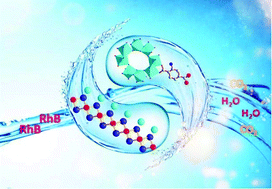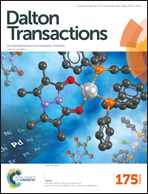Enhanced photocatalytic performance of BiOBr/NH2-MIL-125(Ti) composite for dye degradation under visible light†
Abstract
Metal–organic frameworks (MOFs) are considered as suitable materials for various applications in the area of photocatalysis. On the other hand, 2D BiOBr materials are efficient for the photodegradation of organic dyes under visible light illumination. In this work, BiOBr/NH2-MIL-125(Ti) composite photocatalysts with different NH2-MIL-125(Ti) content were prepared by incorporating NH2-MIL-125(Ti) with BiOBr using a co-precipitation method. A series of characterizations confirmed the strong synergistic effect between BiOBr and NH2-MIL-125(Ti). In rhodamine B (RhB) degradation experiments, the composite photocatalyst with a mass percent of 7 wt% NH2-MIL-125(Ti) exhibited an improved photocatalytic activity compared to pristine BiOBr and NH2-MIL-125(Ti). Furthermore, the enhanced photocatalytic performance under visible light illumination could be attributed to the Ti3+–Ti4+ intervalence electron transfer and synergistic effect between NH2-MIL-125(Ti) and BiOBr, and also resulted in a separation efficiency of photo-generated electron–hole pairs during the photocatalytic reaction. This study can open up numerous opportunities for the development of various MOF-based visible light photocatalysts when combined with 2D bismuth oxyhalide materials for applications in environmental cleaning.


 Please wait while we load your content...
Please wait while we load your content...